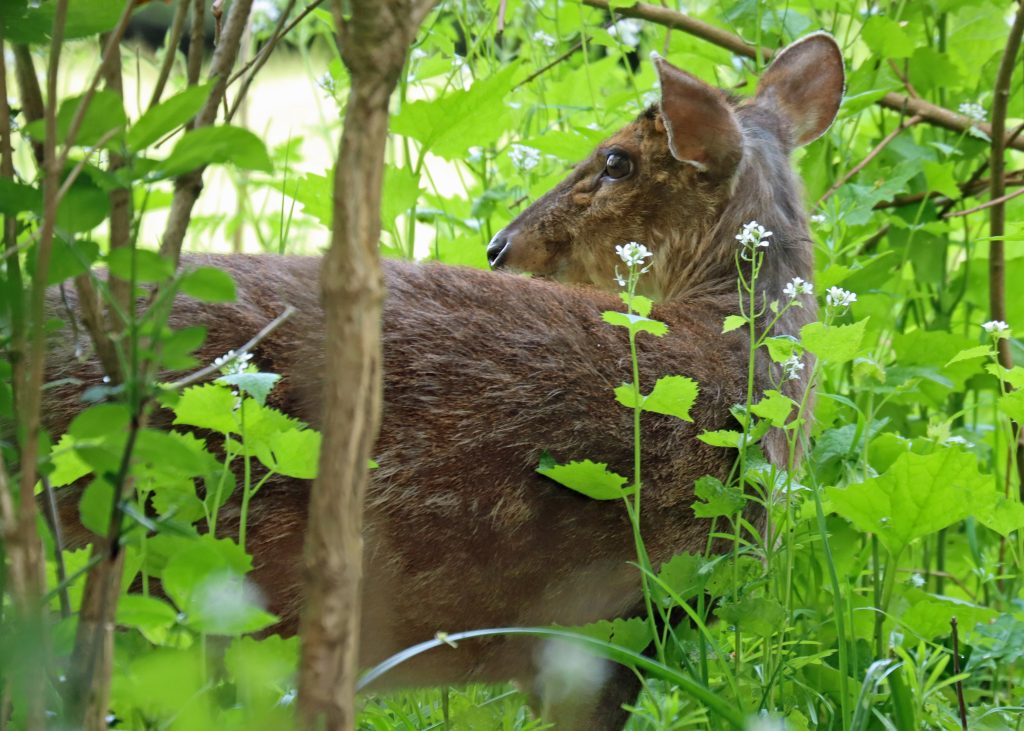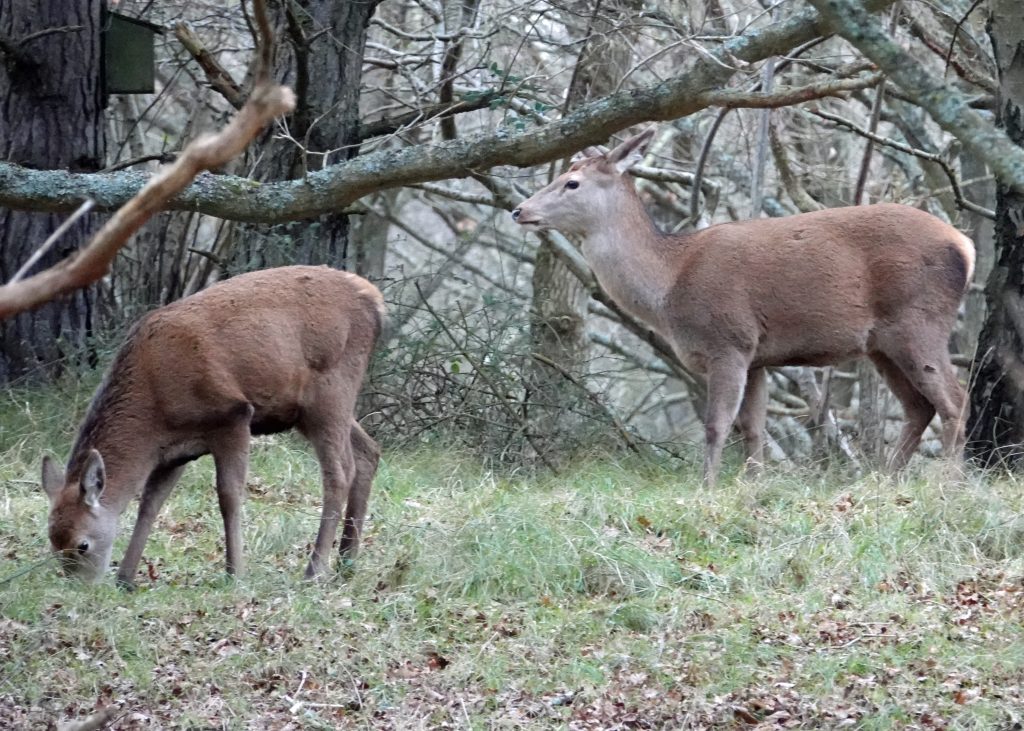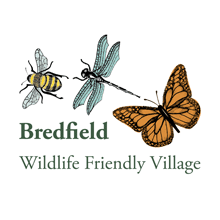It is usually considered that there are three species of deer native to Britain: Red, Fallow and Roe. It is true that prehistoric fossil remains of all three of these deer species have been found in Britain. However, all three species became largely or wholly extinct in these isles, at various times. Their numbers have been ‘re-stocked’ over hundreds of years by introductions into deer parks and private estates, from which they subsequently escaped and spread. In the surroundings of Bredfield, the two species of deer from this group that you are most likely to see are Fallow Deer and Red Deer. Roe Deer are recorded in East Suffolk, but their stronghold is in the west of the county. Today, we must add another species to the list of local deer – the Muntjac Deer. Following 20th century introductions and escapes, this small deer is now well-and-truly established amongst us. It wouldn’t be at all unusual to see one in Bredfield’s copses, hedgerows, meadows and even gardens. There are two other (introduced) species of deer in Britain – Sika Deer and Chinese Water Deer – but you are extremely unlikely to see these in the local area.

Fallow Deer
Let’s have a closer look at the three species of deer that are now a fairly common sight around Bredfield. Red Deer are the largest species of deer. You may associate them with Landseer’s ‘Monarch of the Glen’, but today they are as likely to be found in Suffolk’s woodlands and fields. They are a gregarious species and herds roam extensively. Spectacular rutting occurs in Autumn. Fallow deer are also highly gregarious. They are smaller than Red deer and the male’s antlers take a distinctive palmated form. The typical image of the Fallow Deer is an animal of fawn fur with white spots. However, these deer are quite variable in appearance; as well as the famous ‘white hart’, chocolate-brown, spotless animals are not uncommon. Herds of Red and Fallow Deer spend much of their time in woodland (such a Ufford Thicks) and emerge from there, especially at night, to graze local fields and meadows. Muntjac Deer are solitary creatures and, if you flush one, you may be forgiven for thinking that you’ve seen a large dog. They even sound like a dog when they ‘bark’. Closer examination will reveal are dark ‘V’ on the face, and the males sport small tusk-like canine teeth.

Muntjac Deer 
Red Deer
All deer populations have undergone a large increase in numbers. Long gone are days when deer numbers would be kept in check by natural predators such as wolves or lynx. Though deer are wonderful, and watching deer brings great delight, the growth in their population has brought them into conflict with people (such as farmers and nighttime motorists) and interests (especially the interest of conservation). In this short article, I just want to say a few words about the latter. The grazing and browsing habits of deer alters the landscape in which they are found. Muntjac deer, for example, browse the understory of scrubland and woods, removing the nesting habitat for species such as Nightingale. This is a serious conservation concern. When animal species are introduced into habitats already reduced in extent and degraded ecologically, it may be time to shift away from a laissez-faire view that nature should be just left alone. Finding a balance that maintains deer populations whilst avoiding adverse environmental impacts may require measures that seemingly go against the grain of being wildlife-friendly. Conservationists have to face and tackle these dilemmas and difficult issues.
All photos taken by the author. For more information about Suffolk’s Deer see: Bullion, S. (2009) The Mammals of Suffolk

